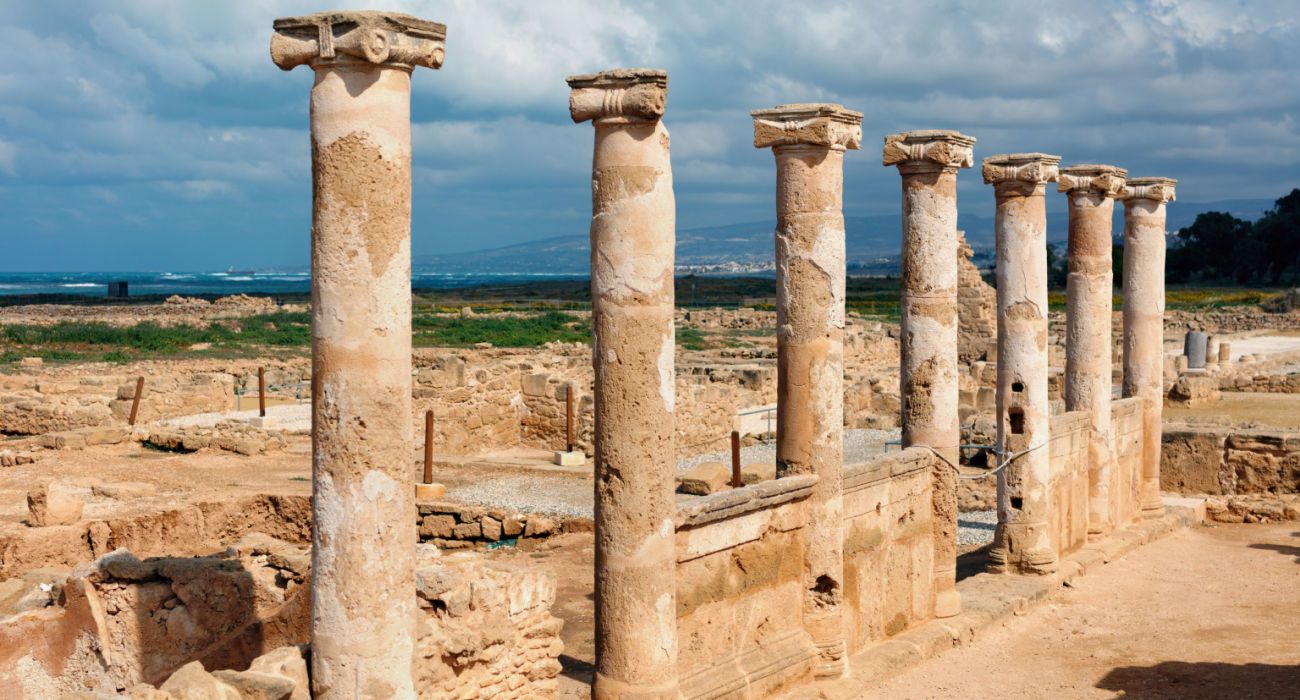Quick Links
Today the Mediterranean island of Cyprus is one of the leading holiday destinations in the Mediterranean region. It is split between the Republic of Cyprus to the south and unrecognized Turkic Northern Cyprus to the north (plus some sovereign British air force bases). The island has some of the longest recorded history in the world going back to some of the earliest days of written history.
For a very long time Cyprus was part of the Roman Empire and today the island is full of many excellent Roman ruins to see and explore. While in the Mediterranean, visit both Cyprus and Crete and see how the two islands differ.
The Very Long History Of Roman Cyprus
Roman Cyprus was a small senatorial province in the Roman Empire that figured quite prominently in the Eastern Mediterranean. It was a strategic island positioned in the Eastern Mediterranean trade routes. Cyprus was annexed into the Roman Republic in 58 BC (later the Roman Empire).
As the Roman Empire split, it became a part of the Eastern Roman Empire / Byzantine Empire. The Eastern Romans (or Byzantines) continued to rule Cyprus long after the Western Roman Empire had fallen. In 688, the weakened Byzantines agreed to share joint control of Cyprus with the Arabs as a condominium.
This agreement managed to last for hundreds of years in different forms until the Byzantines managed to recover complete control of the island in 965.
- Roman Rule: Over 1,200 Years (Including Byzantines & Hiccups Along The Way)
Eventually, Roman control came to an end when the Crusader English king, Richard the Lionheart captured the island from the Byzantines in 1191.
Richard the Lionheart is remembered as the 'good' king as opposed to his brother, Prince John in the legend of Robin Hood. People can see the tomb of Prince John at Worchester Castle in England today.
Thus, Roman rule in various forms persisted in Cyprus for over 1,200 years. Now that's impressive!
Under Roman rule, Cyprus was split into four main districts: Salamis, Paphos, Amathus, and Lapethos. The capital of the island was Paphos until 346 AD when the capital moved to Salamis (re-founded as Constantia).
Visit The UNESO-Listed City Of Nea Paphos
Today the ancient Roman city of Nea Paphos is preserved in the Paphos Archeological Park (located in Paphos in southwest Cyprus). It boasts a large amount of important Greek and Roman ruins - some monuments even date from prehistoric times.
- Open Daily: Monday – Sunday
- Winter Season: 8:30 am – 5.00 pm 16 September – 15 April
- Summer Season: 8:30 am – 7.30 am 16 April – 15 September
- Entrance Fee: €4.50 ($5.00)
The most significant remains at Nea Paphos are four elaborate Roman villas. All of them have very well-preserved mosaic floors. These are:
- The House of Dionysos
- The House of Aion
- The House of Theseus
- The House of Orpheus
Other sites in the city include a basilica, a Hellenistic-Roman theater, an agora, the Tombs of the Kings, and others. The Tombs of the Kings is a large necropolis with underground tombs dating from the 4th century BC (long before the Romans arrived).
They are carved from solid rock and have been UNESCO World Heritage listed since 1980.
Explore The Ancient Capital City Of Salamis
Some of the best Roman ruins in Cyprus are in the city of Salamis. It was the capital of Cyprus as far back as 1100 BC (with interruptions). The city saw the Assyrians, Egyptians, Persians, Ptolemies, and Romans come and go, but eventually, it succumbed to the forces of nature.
It was damaged by a powerful earthquake in 76 AD (around the same time as Pompeii was buried by Vesuvius) and again in 331 AD. As in many other cities around the Empire, as it converted to Christianity, nude statues and symbols of pagan religion were defaced and destroyed.
There are plenty of ruins to see - one of the most remarkable of which is a 15,000-seat theater. People can see plenty of marble columns, the ruins of Roman baths, and much more.
Cyprus is a very ancient place to visit. See ruins from the Mycenaean Greeks, some of the oldest water wells in the world, and much more — the island was already ancient with many ancient ruins long before the Romans arrived.
There are plenty of other ancient ruins and attractions to discover on the island. Cyprus is not all around ancient ruins and beaches; the island also has plenty of wine routes to explore.

